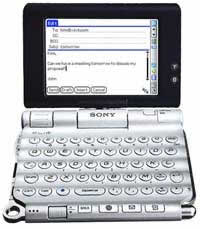 Sony has announced that it is to end production on its Clie line of PDAs in Japan.
Sony has announced that it is to end production on its Clie line of PDAs in Japan.
The move comes eight months after the company said it would stop developing new Clie models for the US and European markets, to concentrate on Japanese users.
First launched by the Tokyo company in mid-2000, Sony’s Clie handhelds gave an almighty kick up the backside of PalmOne and stirred up the market with a series of dazzling innovations.
Their last two European models, the TH55 and UX50 were both highly regarded, offering a full suite of connectivity options (Bluetooth, wi-fi, infrared) supported by Sony’s proprietary software and the huge Palm back catalogue.
In Japan, Sony had the top share of the domestic PDA market in 2003 at 32%, followed by Sharp (19%) and Casio (16%), according to information and technology industry researcher Gartner Japan Ltd.
Sony’s total retreat from the PDA market was considered a serious blow to PalmSource who have yet to match Sony’s ground-breaking designs.
This latest announcement looks like another nail in the coffin for the PDA – as mobile phones, portable media players, and even gaming consoles sport ever-expanding PDA-like capabilities, the PDA market seems to be ever-shrinking.
In an interview with PC World, Sony spokesperson Aki Shimazu said, “There won’t be any new Clie PDAs but we are not necessarily exiting the PDA business”. She also added that the company may collaborate with other companies for future devices.
 Our guess is that they’re going to focus their energies on ramping up the feature list on Sony Ericsson smartphones, developing the PlayStation Portable and finally producing the iPod killer they so desperately need.
Our guess is that they’re going to focus their energies on ramping up the feature list on Sony Ericsson smartphones, developing the PlayStation Portable and finally producing the iPod killer they so desperately need.
Loyal Clie users still wailing into their beers at the prospect of losing a much loved product line (that’ll be me) can draw the tiniest scrap of consolation out of the news that Sony will keep providing parts and repair services for at least another six years or so.
Shareholders at Palm will probably have even longer faces after losing such a vital licensee for their operating system. Could this be the beginning of the end for Palm?
 Apple has updated its iPod photo line-up with a new slim 30GB model, holding up to 7,500 songs, for just £249 ($475, e360) and a new 60GB model, holding up to 15,000 songs, for £309 ($590, e446)
Apple has updated its iPod photo line-up with a new slim 30GB model, holding up to 7,500 songs, for just £249 ($475, e360) and a new 60GB model, holding up to 15,000 songs, for £309 ($590, e446) The truth is that the iPod photo seems to be far better as a versatile MP3 player and photo presentation unit rather than something for serious photographers to use for direct-to-camera storage.
The truth is that the iPod photo seems to be far better as a versatile MP3 player and photo presentation unit rather than something for serious photographers to use for direct-to-camera storage. A handy Google search feature went live this week that lets users find showtimes at nearby movie theatres using either their computer or mobile phones and other wireless devices that use short-message services.
A handy Google search feature went live this week that lets users find showtimes at nearby movie theatres using either their computer or mobile phones and other wireless devices that use short-message services.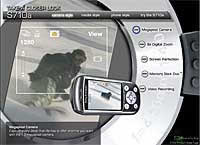 We know that camera phones are getting better and that the Ericsson S710a Camera Phone has a better one than most, but this over-excited PR bonanza from Sony has rubbed us up the wrong way.
We know that camera phones are getting better and that the Ericsson S710a Camera Phone has a better one than most, but this over-excited PR bonanza from Sony has rubbed us up the wrong way.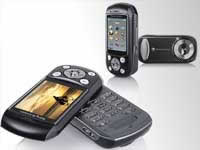 Now we like the Sony Ericsson S710a phone. It’s a great phone.
Now we like the Sony Ericsson S710a phone. It’s a great phone.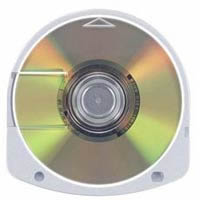 Kids today, eh? Spoilt rotten they are.
Kids today, eh? Spoilt rotten they are.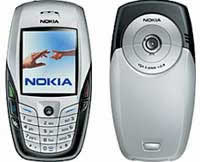 Mindful of the advance of Linux as an OS for mobile handsets,
Mindful of the advance of Linux as an OS for mobile handsets, 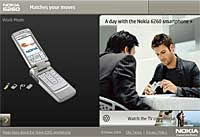 In return Microsoft will also be supporting OMA DRM and AAC music format in their Windows Media player, via a plug in.
In return Microsoft will also be supporting OMA DRM and AAC music format in their Windows Media player, via a plug in. There’s a big future in locations-based services and Nokia are making their move to provide technology for it. As part of the Nokia mPosition System, Nokia is rolling out the Nokia intelligent Gateway Mobile Location Center (iGMLC) 4.0.
There’s a big future in locations-based services and Nokia are making their move to provide technology for it. As part of the Nokia mPosition System, Nokia is rolling out the Nokia intelligent Gateway Mobile Location Center (iGMLC) 4.0. In a litigious pincer movement,
In a litigious pincer movement, 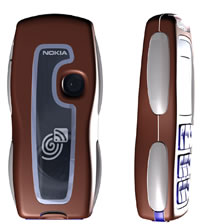 The world’s first Near Field Communications (NFC) product for payment and ticketing will be an enhanced version of the already announced Nokia NFC shell for Nokia 3220 phone.
The world’s first Near Field Communications (NFC) product for payment and ticketing will be an enhanced version of the already announced Nokia NFC shell for Nokia 3220 phone.